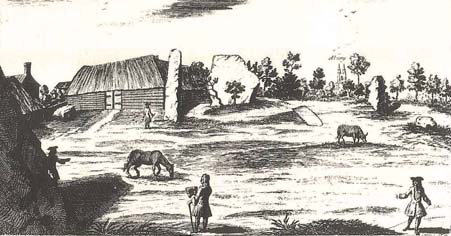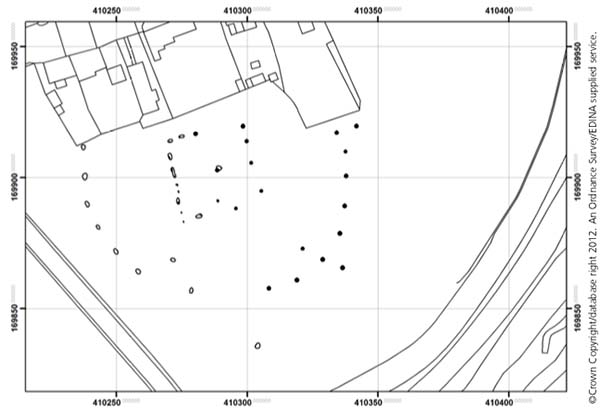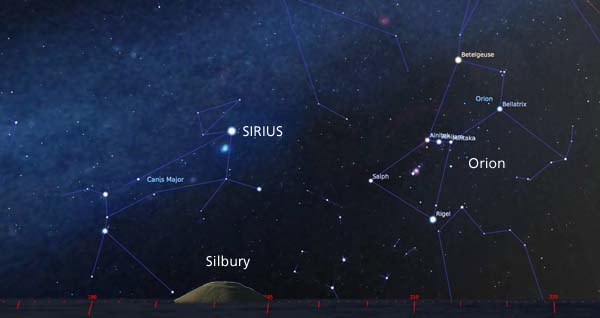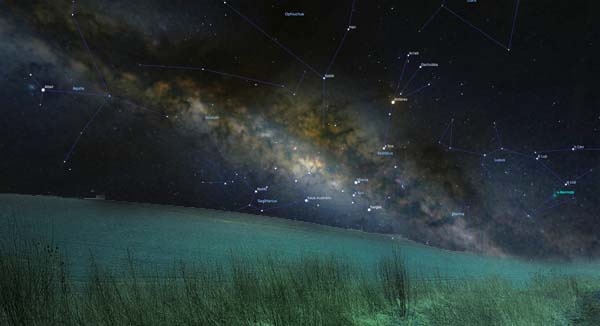AVEBURY’S MYSTERIOUS RECTANGLE
New research reveals the possible astronomical beginnings of a stone circle.


Avebury may be the largest stone circle in Europe, but in the late nineteenth century one could barely see the stones for the houses, barns, cattle pens and trees. When marmalade magnate-turned-archaeologist Alexander Keiller bought the site in 1938, his main ambition was to restore the site to its original condition, by finding stones long since buried and demolishing homes as they became vacant.
One of the unusual things Keiller noticed during excavations was a 98-feet long rectangular enclosure in an area near the centre of the site, once marked by an 18-foot tall obelisk, long since destroyed. Today, the position of the obelisk is marked by a concrete plinth and a few sarcens marking the original rectangular structure, which Keiller believed to have once been a lean-to cattle shed.
Recent ground-penetrating radar by the University of Leicester reveals more of the rectangle’s missing stones and their sockets, along with a smaller rectangle within. They speculate that the latter structure was erected a thousand years before the entire site was completed around 2650 BC. These archaeologists believe what they have uncovered is the remains of a Neolithic house, but if one examines the function of Avebury, this new, small rectangle may yet prove to be the original site from where all the astronomical observations were made that eventually led to the construction of the site proper.

The rectangle of megaliths and the central obelisk, including data from recent survey by Mark Gillings and University of Leicester.
From the air, Avebury resembles two frying eggs in a pan. The two inner stone circles originally comprised of 29 and 27 stones respectively; one represents the days in the synodic lunar month, the other the sidereal lunar month. These are enclosed within a massive 99-stone circle with 8 attendant stones, marking the calibration of lunar-solar calendars every eight years.
So aside from a temple, Avebury is a calendrical masterpiece marking the motions of the moon.
Conventional archaeologists believe the main circle was constructed from the outside in, a preposterous assumption given that in order to measure the motions of the moon and sun requires a central area from which to make observations and calculations. Enter our recently rediscovered small rectangle, which may have served as the original spot from where extensive solar/lunar calculations were made .

Possible lunar, solar and stellar alignments from the obelisk, and their relationship to the Avebury rectangle.
This diagram shows the central obelisk and the rectangular enclosure which would have been used to mark the northern and southern lunar standstills every 18.6 years and, possibly, the extreme risings and settings of the sun. Once established, the stone circles would have been positioned accordingly.
This rectangle is based on pure astronomical alignments. What is now required is the data of the original post-holes to see if the two match. If they do then this ‘building’ may have been an observational site. I should point out that identical rectangles are found in Carnac and Portugal and were used for exactly the same purpose.
But two other surprises popped up during my research, and only by spending a long time at Avebury (I used to live nearby years ago) do your eyes see a purposely-designed landscape.
It is an extraordinary feat that no matter where in the landscape one stands, even on high ground, Avebury cannot be seen.
Its approach from the southeast is blocked by the gently-sloping Waden Hill, named for the the Norse god of the Otherworld and his association with Orion. Conversely, Waden Hill blocks the view from inside Avebury of Europe’s tallest mound, Silbury Hill, barely a mile south of the circle — except for one spot beside the original obelisk. From here the summit of Silbury appears subtly along the right-hand slope of Waden Hill and in alignment with a V-notch cut into Avebury’s chalk embankment.
It is likely this notch was originally built into the equation when the embankment was some thirty feet taller than it is today.

The summit of Silbury, the only part visible from inside Avebury. The alignment on the spring equinox 2650 BC. shows Sirius over Silbury, with Orion to the right.
As a lunar site, and thus feminine, Avebury would have been presided by Sirius, much like the temples of Egypt. It is therefore significant that in the epoch c.3000 BC, Sirius is the brightest object in the spring equinox sky just after sunset. And it appears precisely above the V-notch and the summit of Silbury Hill. Adjacent is Orion.
But there’s more. A few hours later on this momentous occasion, the Milky Way rolls around to mimic the slope of Waden Hill, and is seen ‘pouring’ itself into the summit of Silbury. A dramatic and perfect representation of sky-ground dualism.
Or As Above, So Below.

The mirroring of the Milky Way and Waden Hill (partly shown), as seen two hours later from Avebury.
And now we know.
© FREDDY SILVA, 2017